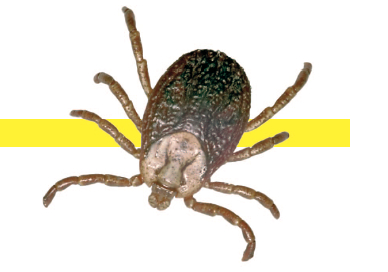Midges are a nuisance, and ticks can be a real danger. Margaux Smale looks at ways to beat the blighters…
There is a wide variety of tick species living in Britain, but the one most likely to feed on human blood is the sheep tick. While the adult tick (which can grow to the size of a small pea) looks most menacing, it is the pinhead-sized nymph that is most likely to bite you. The bite itself is usually painless, but if you don’t spot it in time this eight-legged blood-sucking anthropod will attach itself to your skin for up to seven days before dropping off. The longer the tick is left in position, the greater the risk of infection. If the tick falls off or is removed within 24 hours, the risk is generally quite minimal.
When?
Ticks are active at temperatures as low as 3.5°C, but with climate change causing milder weather in the UK, tick bites are possible at any time of year (although they are more common during late spring, early summer and autumn).
Where? Generally found in woodlands, uplands, countryside and even gardens, these creatures like deep vegetation and warm, humid conditions. Ticks like to feed off deer, sheep, birds and other mammals, so be more aware when passing through animal-populated land. Parts of the UK that are known to have a high population of ticks include Exmoor, the New Forest in Hampshire, the South Downs, parts of Wiltshire and Berkshire, Thetford Forest in Norfolk, the Lake District, the Yorkshire Moors and the Scottish Highlands.
Are they a danger?
Ticks transmit hundreds of different diseases, but those most common in Britain include Babesiosis, Ehrlichiosis and Lyme borreliosis. Lyme disease is by far the most widespread. Figures vary, but according to BBC Health about 15-20 per cent of any given tick population could carry Lyme disease, though only a small (known) percentage of tick bites will lead to this condition. Lyme Disease Action says about two-thirds of cases will develop a bullseye-shaped rash. Appearing between 2-30 days after the bite, this is a symptom of early stage Lyme disease and is not painful or itchy. Further symptoms can include fever, headaches, fatigue, muscle pain, joint pain and neck stiffness, but it can lead to more serious conditions such as chronic fatigue syndrome.
How do I remove a tick?
If bitten, it’s vital to remove it swiftly and correctly. Don’t use your bare fingers as the bacteria from the tick’s burst guts and saliva can still infect you. Use pointed tweezers or a single loop of cotton thread around the tick’s mouthparts, grip the tick as close to the skin as possible and gently pull the tick out. There are also several tick removal devices available including the O’Tom Tick Twister (otom.com) and Trix Tick Lasso (tickremover.com). Do not use petroleum jelly, cigarette lighters or any other creams or chemicals to remove ticks. Apply an antiseptic to the bite after removal. You can test the tick for Lyme disease using Trix quick test, a product that will determine (with 98 per cent accuracy) within 10 minutes if a tick is infected.
Midges
These little biting monstrosities are the bane of many hillwalkers. The good news is that Scottish Natural Heritage says only 16 of 152 species have been recorded to feed from humans. When you also consider you can only be bitten by a female, the odds come down even more.
When are they at their worst?
Mid July to September
Where?
Although most common in Scotland, they can be found in most highland areas. Over the past decade numbers have been increasing in Cornwall and Pembrokeshire.
It’s not always possible to avoid them, but midges are generally most active just before sunset. They love humid conditions (over 60-75 per cent humidity), shady and sheltered areas, altitudes below 700m, and are often found near water. With a hatred for strong sunlight, the best way to avoid these pesky mites is on a windy but bright and sunny day.
Are they a danger?
More of an annoyance than a danger; these pests do not transmit diseases to humans. Reactions are minor (swelling and itching) but some may have an allergic reaction (which is less common).
Prevention
To avoid being bitten in the first place, follow these simple steps…
Midges
Midge head nets are a pretty effective solution. Make sure your tent flaps or at least your mosquito screen is fully closed. Anti-midge candles are another useful deterrent to use at night.
Ticks
Walk in the middle of the path to avoid picking up ticks from vegetation. Try not to sit on the ground in vegetated areas. Check your clothes and skin frequently and especially before going to sleep.
Midges & Ticks
Keep covered. Midges and ticks cannot bite through fabric. Tuck your trousers into your socks and wear light-coloured clothing so ticks and midges are easier to see.
Insect-repellent clothing. Craghoppers’ NosiLife range has permanent insect repellent and Rohan has recently re-launched its Biteguard technology clothing.
Regularly apply insect repellent. Care Plus offers a range of products and Smidge contains the active ingredient Saltidin, a safe alternative to DEET. Avon’s Skin So Soft body lotion is also a long popular non-DEET means of avoiding bites. Citronella oil is a good alternative if you prefer a natural antidote, while dried crushed bog myrtle leaves also have repellent properties.







